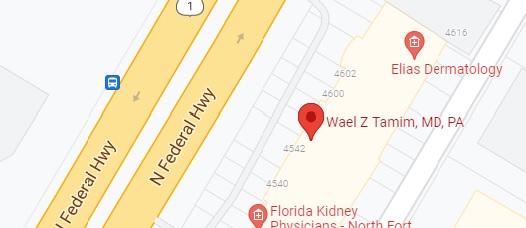
What is Carotid Occlusive Disease/Carotid Artery Stenosis/Carotid Artery Disease?
Carotid occlusive disease, also known as carotid artery disease or carotid artery stenosis, occurs due to the deposition of plaque (fatty substances) inside the walls of your carotid (neck) arteries. These arteries supply oxygen-rich blood from the heart to your brain. Due to plaque accumulation, the arteries become narrower or even completely blocked. This reduces blood flow to your brain and creates oxygen-deficiency, increasing your risk of having a stroke.
What are the Symptoms of Carotid Artery Disease/Carotid Artery Stenosis?
Carotid artery disease may remain asymptomatic until your arteries become severely narrowed or blocked and cause a transient ischemic attack (TIA) or a stroke
The common signs and symptoms of a stroke may include:
- Sudden severe headache
- Dizziness or confusion
- Loss of balance, memory and/or body coordination
- Blurred vision, difficulty seeing from one or both eyes, or complete loss of vision
- Numbness or weakness in one side of your face or body
- Difficulty speaking
- Difficulty swallowing
What are the Risk Factors for Carotid Artery Disease/Carotid Artery Stenosis?
People with the following conditions are at an increased risk of carotid artery disease:
- Heart disease
- High blood pressure (hypertension)
- High cholesterol
- Diabetes
- Obesity
- Family history of heart disease
How is Carotid Artery Disease/Carotid Artery Stenosis Diagnosed?
Your doctor will review your medical history and assess your symptoms. This includes listening to the arteries in your neck using a stethoscope. If your doctor detects an abnormal sound called a bruit, it may be due to a narrowed carotid artery and could indicate carotid artery disease. Additional tests may be ordered to detect the presence of blood clots, blockages, or narrowed carotid arteries. These include:
- Ultrasound of the carotid artery using high-frequency sound waves to measure the flow of blood through your blood vessels.
- Imaging tests such as computerized tomography (CT) scan or magnetic resonance imaging (MRI) scan.
- Carotid angiogram: In this procedure, a contrast dye is injected into your carotid arteries and with the help of a live X-ray, images of your neck and brain are collected. This helps to understand the flow of blood in your arteries and is thought of as the “gold standard" for carotid artery imaging.
What is the Treatment for Carotid Artery Disease/Carotid Artery Stenosis?
Your doctor may begin your treatment with non-surgical methods. This includes medications to lower your blood pressure, blood cholesterol and blood sugar if elevated.
For more serious cases where the carotid artery is severely narrowed or blocked, surgery may be performed to open the artery. This will increase the blood flow to your brain and prevent a stroke. The different surgical techniques include:
- Carotid Endarterectomy: In this procedure, you will be administered general anesthesia and an incision will be made in your neck at the site of blockage in the carotid artery. Your surgeon will remove the plaque, repair the artery and close the incision.
- Carotid Artery Stenting: In this procedure, a tiny puncture is made in your groin and a catheter is threaded up to the site of the blockage in the carotid artery. Once it is positioned, a small balloon present at the tip of the catheter is inflated for a few seconds to open the artery. Then, a metallic mesh called a stent is placed into your artery. It is expanded and left in place to keep the artery open.
Prevention of Carotid Artery Disease/Carotid Artery Stenosis
You can prevent or lower your chances of developing carotid artery disease/carotid artery stenosis by practicing a few lifestyle changes. These include:
- Maintain a healthy weight with 30 minutes of daily physical exercise and consumption of a healthy diet.
- Control your blood pressure, blood cholesterol and blood sugar levels.
- Take medications as prescribed by your physician.
- Avoid smoking and drinking alcohol.
- Go for regular checkups with your doctor.


